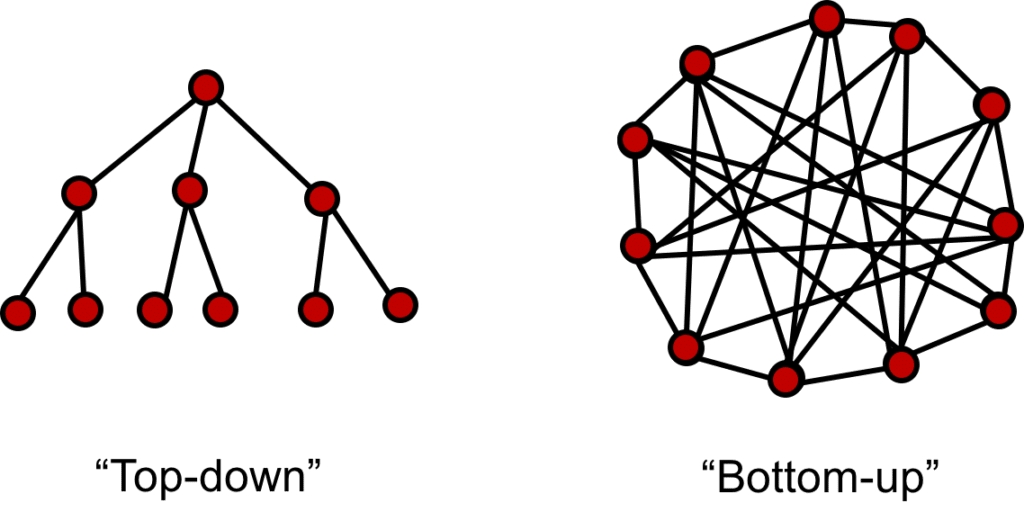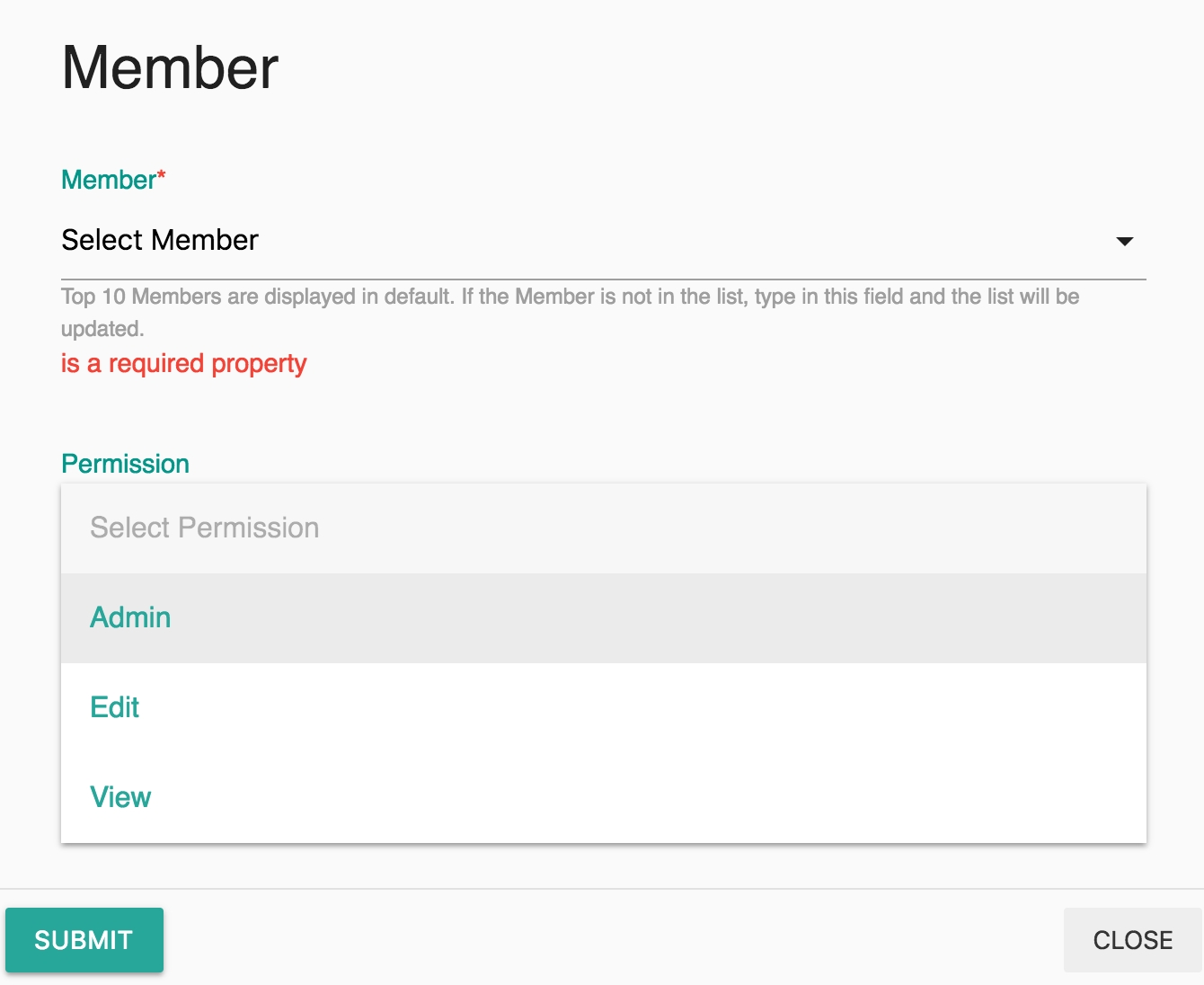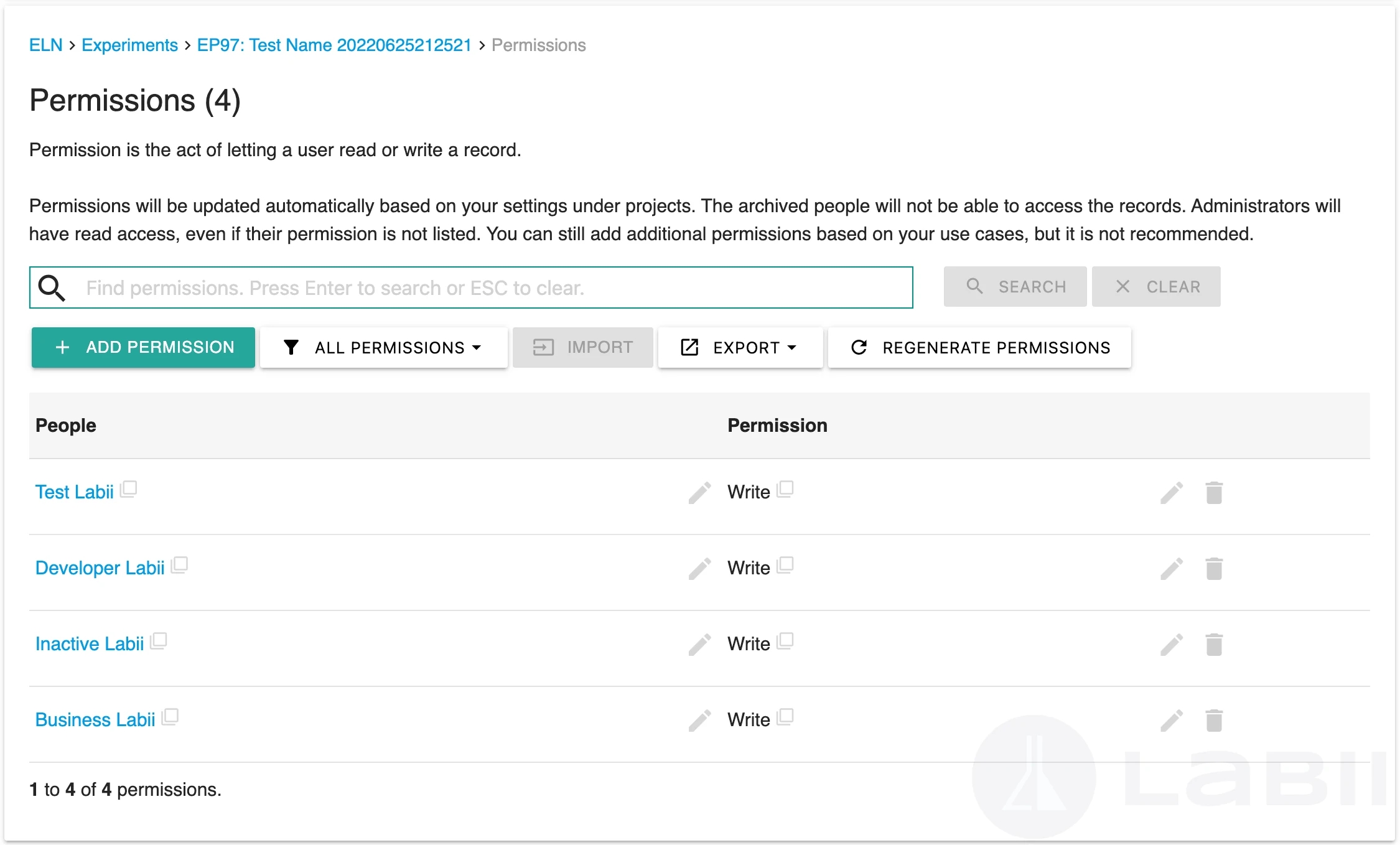2022-06-16 Managing Permissions, Sharing, And Collaborating In Labii ELN & LIMS
2022-06-16
Overview
To make sure the IP is protected and data only available to those whose access is supposed to be granted, permission control is critical to Electronic Lab Notebook (ELN) and Laboratory Information Management System (LIMS). Moreover, it is also vital to ensure that users have permission to generate the data as needed. The purpose of this blog is to discuss permission control in Labii and how to customize the permissions to meet your specific research objectives.
What is permission control?
Permission control refers to the process of restricting access to a particular resource or system from various entities. Permission control encompasses all entities that may gain access to an information system, including but not limited to users, hosts, routers, and switches.
Labii controls permission at three levels. The three levels are organization level, project level, and object/record level.
Permission control at organization level
At the organization level, you can set the permission structure for the account. The two main approaches to implementing permission control are the top-down and bottom-up approaches. A top-down management style is a hierarchical approach to management, with power and decisions generally resting with those at the top. A bottom-up management method allows teams and individuals to determine at least some of their own outcomes and priorities.

You can choose a top-down or bottom-up permission structure through Settings -> Organization -> Permission structure. The default permission structure is top-down. Using a top-down permission structure, only administrators and project managers are able to create new projects or folders. Permissions to view and edit are also assigned by administrators or project managers. Users who do not have the appropriate permissions should contact their administrator for assistance. On the other hand, with a bottom-up permission structure, anyone can create their own folders/projects and invite others to join them as well.
In addition, different roles can be defined for each user at the organizational level:
is_administrator=true, administrators have full control over the account, can create projects and view all records.is_readonly=true, then readonly users can only be granted Read permissionis_archived=true, archived users cannot access any data.
You can define someone's role in Settings -> People. Change a user's permissions based on the above parameters.

Permission control at project level
At the project level, you can determine who can manage, write, or read the content of the project.
permission=Admin, the project manager(s). Administrators can update project settings, create subprojects, and update member access.permission=Edit, Team members and people with Edit permission to the project can add new records and edit existing records.permission=View, Users with the View permission to the project can read the record.
The project permission can be changed through Settings -> Projects -> Select a project. Click on Members tab to update the permissions for individual members/teams.

Permission control at object/record level
Permissions can also be set at the record/object level. Permissions for read and write are defined by the organization and project configurations. Users are automatically given permissions according to their roles.
You can view permissions by opening the record, going to the Overview tab, and clicking Permissions. Permissions can be temporarily added or removed.

Summary
When using ELN and LIMS, Labii offers sophisticated permission control to facilitate your research. A good permission control protects your intellectual property and increases the efficiency of research. To learn more, schedule a meeting with Labii representatives (https://call.skd.labii.com) or create an account (https://www.labii.com/signup/) to try it out yourself.
Last updated
Was this helpful?